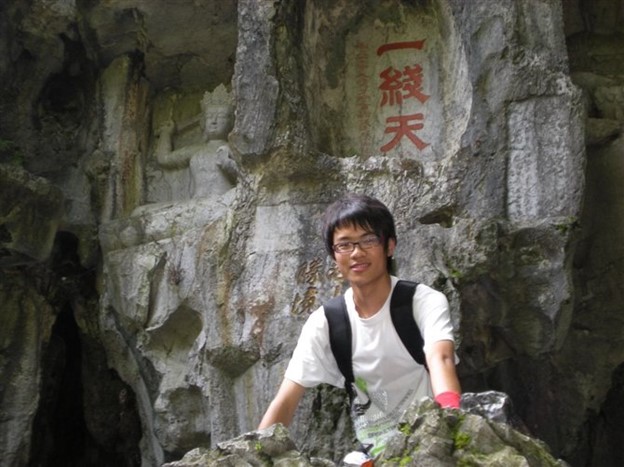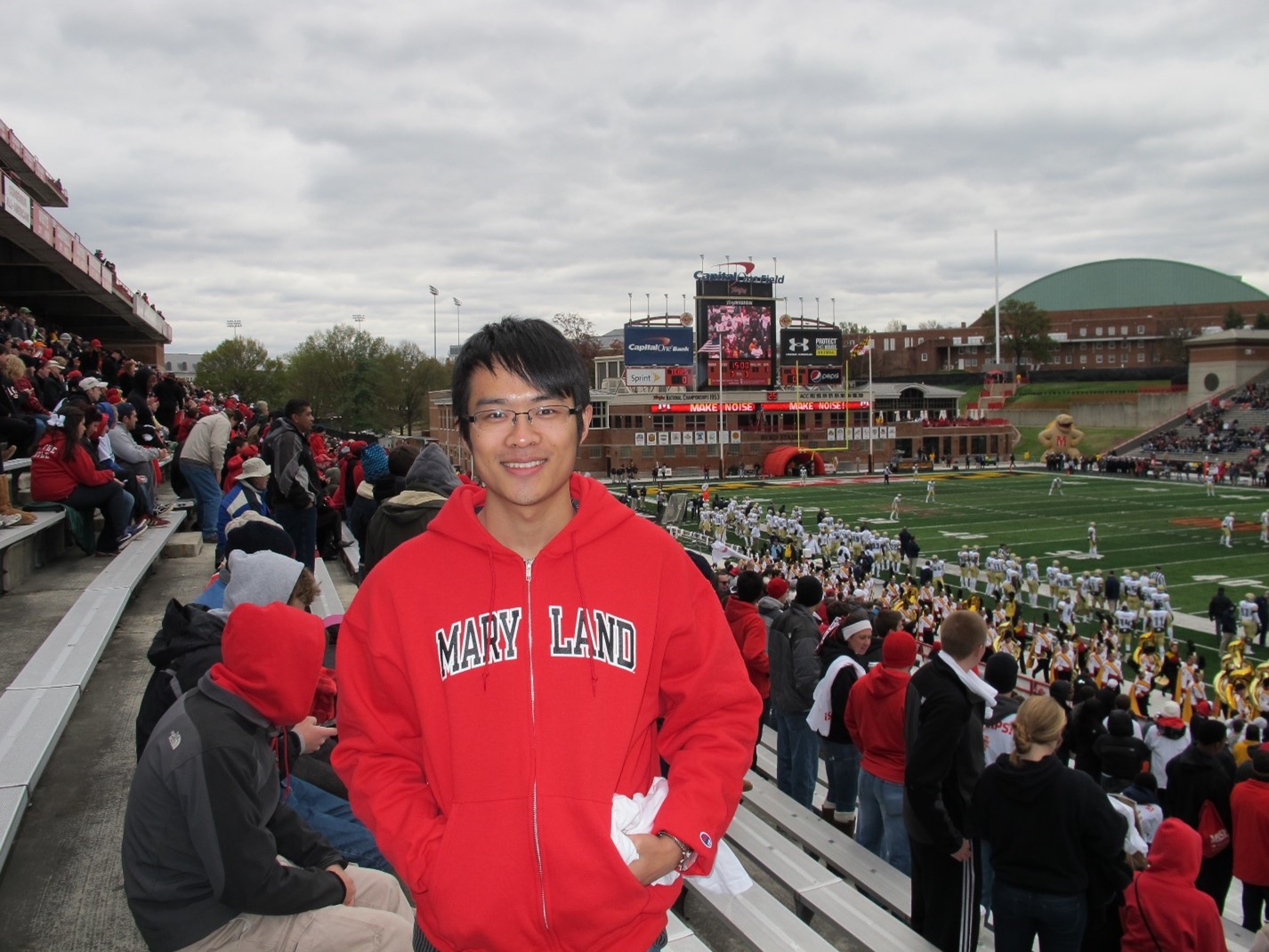UEC Profile: Youtong Zheng Models Complex Marine Clouds
Published: 21 October 2021
The prolific researcher has investigated how clouds grow from parcels of air and rise fast to shade the world
Editor’s note: This is the seventh article in the 2021 series of profiles on members of the ARM User Executive Committee (UEC).

In the summer of 2014, Youtong Zheng (now a research scholar at Princeton University) was just finishing two happy and productive semesters as a visiting student at Hebrew University of Jerusalem.
The trip was a pause in his doctoral studies at the University of Maryland, College Park (PhD, 2018), and part of a collaboration with Israeli cloud physicist Daniel Rosenfeld. Their mutual interest was how to use satellite data to infer the vertical motion of clouds.
Zheng’s studies in Israel were just wrapping up, but the 50-day Gaza War was just starting.
One night in July, a siren pierced the air. Zheng looked out his dormitory window and saw two rockets coming at him out of the night sky, arcing in fiery tracers over a light-dappled urban horizon.
The rockets, from a Hamas battery on the nearby Gaza Strip, were quickly intercepted and blown up. But Zheng, by then already immersed in the cloud studies he still pursues, had never seen anything in the atmosphere like those two missiles―and hopes never to again.
Oceanic Cloud Cover
In the spring of 2021, Zheng joined the Cooperative Institute for Modeling the Earth System, a collaboration between Princeton University and NOAA’s Geophysical Fluid Dynamics Laboratory. (Nearby, his wife is a financial journalist for Bloomberg News.)
Zheng’s recent move from a postdoctoral research position at Maryland to Princeton allows him some degree of continuity for studying low-lying marine clouds.
“Arguably, they are the most important cloud type,” he says, because their vast, cooling cloud decks “cover more of the world than any other. Imagine having fewer low marine clouds. The Earth would warm.”

At Maryland, Zheng worked with Zhanqing Li, a veteran atmospheric scientist and mentor. Li’s research interests include how marine low clouds link dynamically and thermodynamically to the surface of the Southern Ocean. The tops of such clouds, no higher than 3 kilometers (about 1.8 miles), depend on the ocean surface for energy, water, and cloud condensation nuclei.
ARM Data Mainstays
The funding engine of that Southern Ocean work was a project supported by the Atmospheric System Research (ASR) program within the U.S. Department of Energy (DOE). Most of the data came from DOE’s Atmospheric Radiation Measurement (ARM) user facility, which has fixed and mobile sites around the world.
The project’s human engine, says Li, was Zheng. Until he moved on to Princeton, the younger scholar led or co-authored most of the publications to come out of Li’s ASR work on marine low clouds. Central to that work were data from two ship-based ARM campaigns in the eastern North Pacific and Southern Ocean.
Among the latest in the long thread of Zheng-Li papers was a March 2021 Zheng-led study. The paper provided the first observational evidence that a fast-rising parcel of air below a cloud remains similarly fast at the cloud base. That answers a long-standing question on the link between sub-cloud turbulence and cloud-base updraft velocity.
The paper leverages lidar data from ARM’s Southern Great Plains (SGP) atmospheric observatory, which spans parts of Oklahoma and Kansas. The SGP has collected measurements for nearly 30 years.
ARM data, observatories, and campaigns, says Zheng, have been mainstays in what he sees as his basic mission: “to see that climate models work reasonably.”
Early in 2021, he joined ARM’s User Executive Committee (UEC), a group that bridges the worlds of ARM data users and ARM management.
His UEC goal is to “bring together the satellite community and the ARM community,” says Zheng, whose PhD dissertation was a balance of both “satellites for spatial and temporal context and ARM for the ground truth of satellite retrieval.”
Zheng is a member of a UEC subgroup focused on enhancing communication with the satellite community.
A Striking Simplicity

In part, the thread of recent papers from Li’s research group owes a debt to work that Zheng started in Israel.
In 2015, he led a study with Rosenfeld as the co-author that used ARM observations over land and ocean to find a linear relationship between convective updrafts and cloud-base height. The paper described a method for estimating cloud updraft speeds using satellite retrievals of cloud-base temperature data combined with observed temperatures just above the ground.
The result was a unique and important new remote sensing technique that allows researchers to infer the speed of cloud-base updrafts and the concentration of cloud condensation nuclei. Both measures are very difficult to retrieve from satellite platforms―and both are critical for understanding the aerosol-cloud-climate interactions that underpin the Earth’s energy budget.
“The simplicity (of the linear relationship) is incredible given the complexity of the cloud system,” says Zheng.
He was so struck by that simplicity that he paused a few years later to publish a pair of ambitious theoretical papers on the linear relationship between convective updrafts and cloud-base height, using shallow cumulus clouds as a model system. The first paper looked at maritime conditions; the second considered continental conditions.
“Those papers come out of curiosity,” says Zheng of the single-author, math-packed studies on “why such a simple phenomenon can exist in a complex system. The deepest reason I want to pursue a career in science is curiosity.”
In a world of models and observations and high-speed supercomputers, sometimes curiosity just pushes you back to paper and pen, he adds. “People forget that simple, fundamental theories are also very important.”
Focus on Climate Models
“How sea-surface temperatures (affect) winds that transport clouds is a very fundamental question in the world.”
Youtong Zheng, Princeton University
At Princeton, as at Maryland, Zheng is still delving into low-lying clouds in ocean environments. But instead of keying on observations from ARM, he is primarily working on numerical models, including large-eddy simulations (LES) and global climate models.
His geographic focus has changed from frigid polar oceans to subtropical, midlatitude oceans, which are also blanketed by clouds.
The environment over the poles, he observes, is colder than what he studied previously and is farther from aerosol particles generated by human activities. The poles are regions of fewer aerosols in general and have thinner clouds that carry more ice.
His focus now is more on the climate models, says Zheng, in which the representation of clouds (particularly in the marine environment) is an intricate blend of thermodynamic conditions, surface types, and surface conditions.
Meanwhile, the Journal of Atmospheric Sciences recently accepted a Zheng-led paper that he started at Maryland. He says the study is “still very relevant” to the Princeton work because he and his co-authors are using LES to investigate how clouds respond to changes in wind direction from warm to cold water. (A preprint version is available.)
“How sea-surface temperatures (affect) winds that transport clouds,” says Zheng, “is a very fundamental question in the world.”
The Outlier

“I never imagined being a scientist,” says Zheng of his boyhood in Siyang, a densely populated county in coastal east-central China.
The son of a middle school music teacher (father) and a physician (mother), he remembers an elementary school class poll: What will be your dream job when you grow up?
“Two-thirds of the students said ‘scientist,’” says Zheng. “But I was the outlier. I wanted to become a soccer commentator. When I was a kid, I enjoyed watching soccer every single day.”
He was the only one in that class to become a scientist, but soccer abides: He plays in a recreational pickup league, and in the backyard with his wife every day after work.
In school as a boy, Zheng continued to play basketball, table tennis, and soccer, but also soon entered a path to science bordered by two main guiderails. One was chess, which his father taught him to play. “I developed an interest in reasoning,” says Zheng.
The other was a passion in high school for physics and mathematics, subjects that lay outside the rote-learning imperative of those days in China, he says. “You don’t need to memorize much.”
It was in high school that Zheng underwent an experience that also seemed to help speed him on his way to success: His mother changed his name.
As a boy, he was known as “Tong,” which means “fluidly” and describes someone for whom life goes very smoothly.
His mother added “You,” which means “again.”
With a first name like Youtong, explains Zheng, “everything goes smoothly―not just once, but everything goes smoothly again and again.”
‘The Mother of Clouds’

In 2008, with things going smoothly and buoyed by his abiding interest in physics, Zheng set out to study atmospheric science at Nanjing University of Information Science and Technology (B.S., 2012). It was only about two hours by train from home.
In the fall of 2012, culture shock arrived when he traveled to the United States to start his PhD studies in Maryland.
Israel a year later was an even deeper culture shock, says Zheng, not only because of the landscape and a background of war, but because in the Middle East he first realized how central religion was to some people’s lives.
During this early period of graduate work, Zheng looked into the satellite work with Rosenfeld, and he studied clouds in general, including those over land and those that spurred thunderstorms.
With Li as a guide, Zheng used his PhD dissertation to develop a technique that uses satellite data to infer the speed of clouds and cloud-base updrafts. As the Earth’s surface heats up, warm air rises, creating parcels of air that expand. The rising warm air condenses a lot of water, creating clouds and boosting cloud longevity.
“To have clouds,” he explains, “you have to have updraft. Vertical velocity is the mother of clouds.”
Zheng points out that, to complete the cloud-creation picture, clouds need more than rising parcels of air to form. They need aerosols, which Zheng calls “the father of clouds.”
It was under Li’s direction that his focus turned especially to low-lying marine clouds, which some scientists say account for the most uncertainty in global climate models.
To better understand such clouds, says Zheng, “is a very urgent thing.”
Keep up with the Atmospheric Observer
Updates on ARM news, events, and opportunities delivered to your inbox
ARM User Profile
ARM welcomes users from all institutions and nations. A free ARM user account is needed to access ARM data.


















